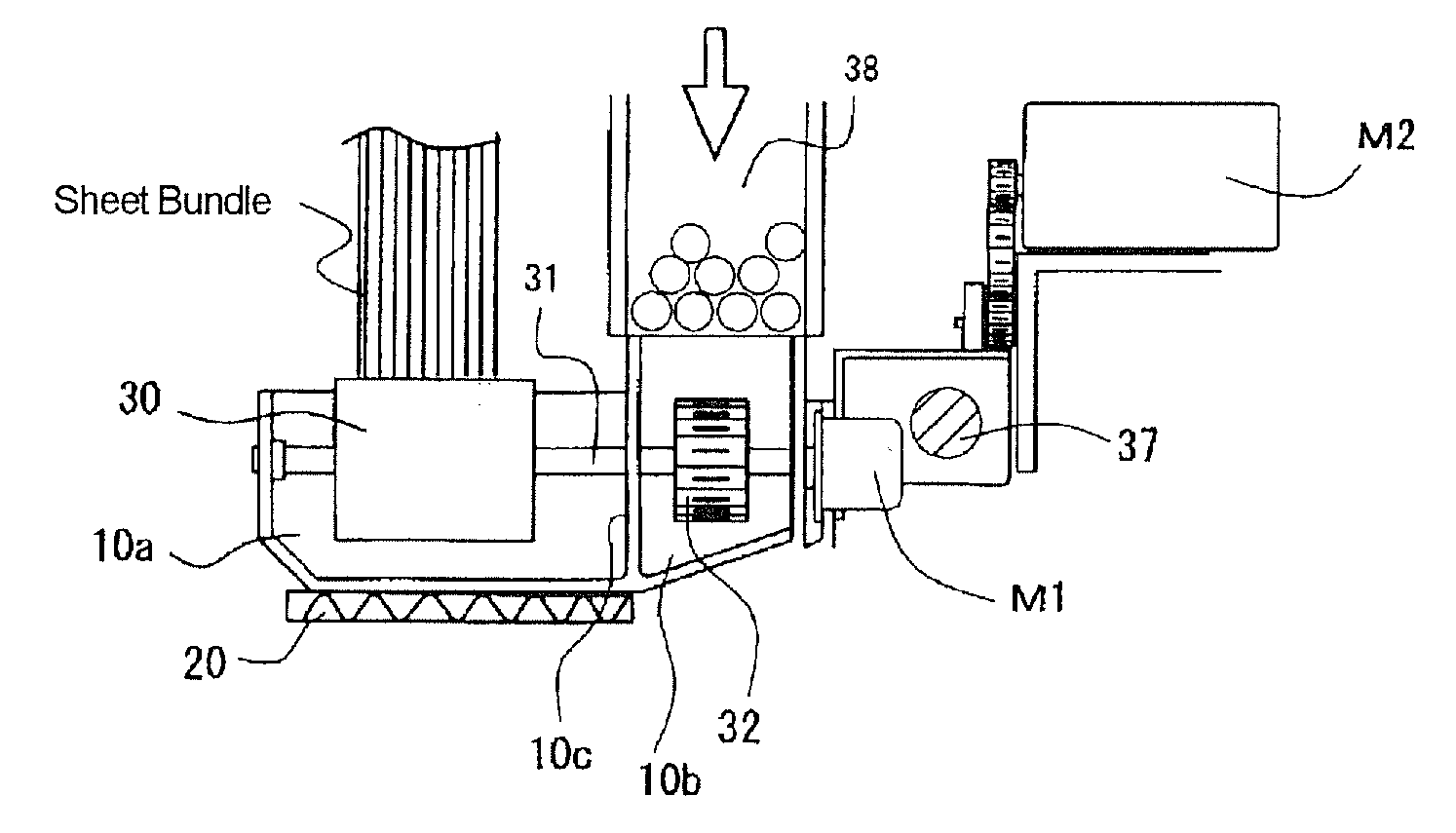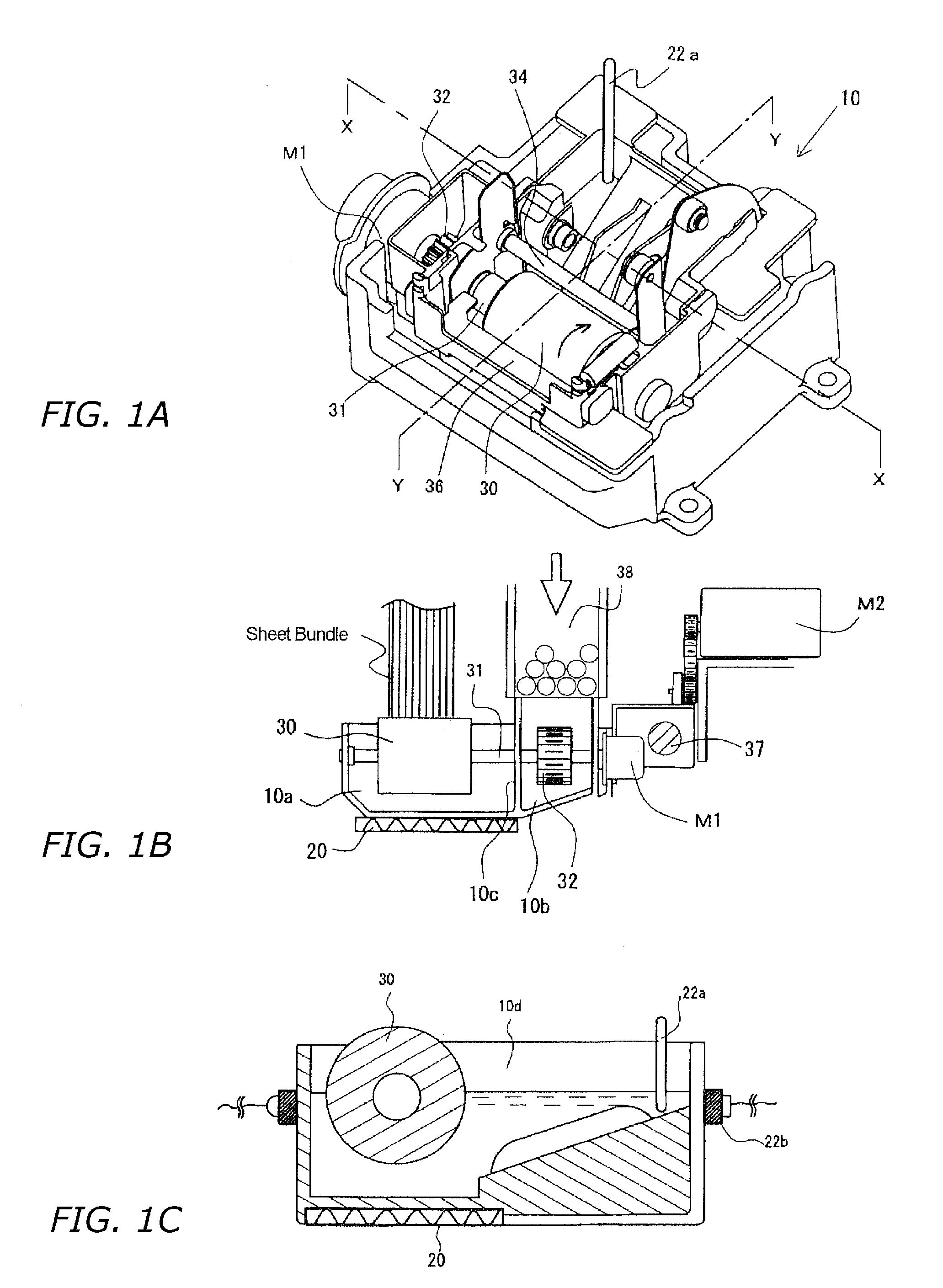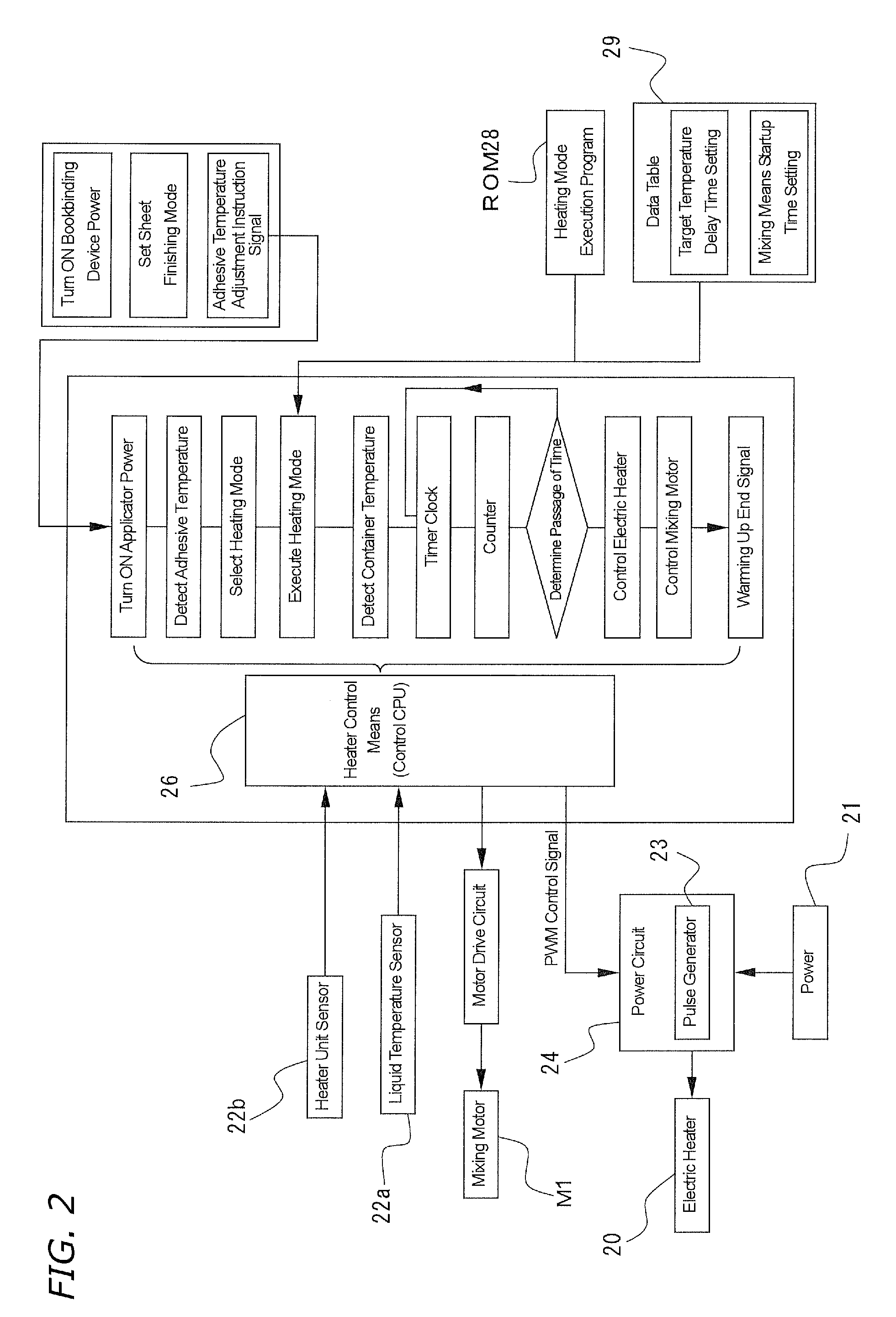Hot-melt Adhesive Temperature Control Method, Applicator Therefor, and Bookbinding Apparatus
a technology of hot-melt adhesive and temperature control method, which is applied in the directions of book binding, packaging, transportation and packaging, etc., can solve the problems of missing leaves of glued booklets, droplets of adhesive being splattered, and the cover sheet becoming soiled or stained, so as to increase the size of the heating apparatus and the comparatively short amount of time
- Summary
- Abstract
- Description
- Claims
- Application Information
AI Technical Summary
Benefits of technology
Problems solved by technology
Method used
Image
Examples
Embodiment Construction
[0032]A preferred embodiment of the present invention will be explained based on the drawings provided. The adhesive applicator B of the present invention will be explained first with reference to FIGS. 1 to 4. FIGS. 1A to C are explanatory views of a configuration of the adhesive container that stores solid adhesive; FIGS. 1B and 1C are sectional views thereof. FIG. 2 is a block diagram of a configuration of a temperature control means that heats and melts adhesive. FIG. 3 is a flowchart showing the actions of the temperature control means. FIG. 4 is a chart showing fluctuations in adhesive temperature.
[0033]In FIG. 1B, a solid adhesive filling chamber (hereinafter referred to as a filler chamber) 10b and an application adhesive tank (hereinafter referred to as a liquid tank) 10a are separated by a wall 10c in a container 10 that holds adhesive. Communicating holes are provided in the wall 10c to allow adhesive that has become liquefied in the filler chamber 10b to flow into the li...
PUM
| Property | Measurement | Unit |
|---|---|---|
| Temperature | aaaaa | aaaaa |
Abstract
Description
Claims
Application Information
 Login to View More
Login to View More - R&D
- Intellectual Property
- Life Sciences
- Materials
- Tech Scout
- Unparalleled Data Quality
- Higher Quality Content
- 60% Fewer Hallucinations
Browse by: Latest US Patents, China's latest patents, Technical Efficacy Thesaurus, Application Domain, Technology Topic, Popular Technical Reports.
© 2025 PatSnap. All rights reserved.Legal|Privacy policy|Modern Slavery Act Transparency Statement|Sitemap|About US| Contact US: help@patsnap.com



